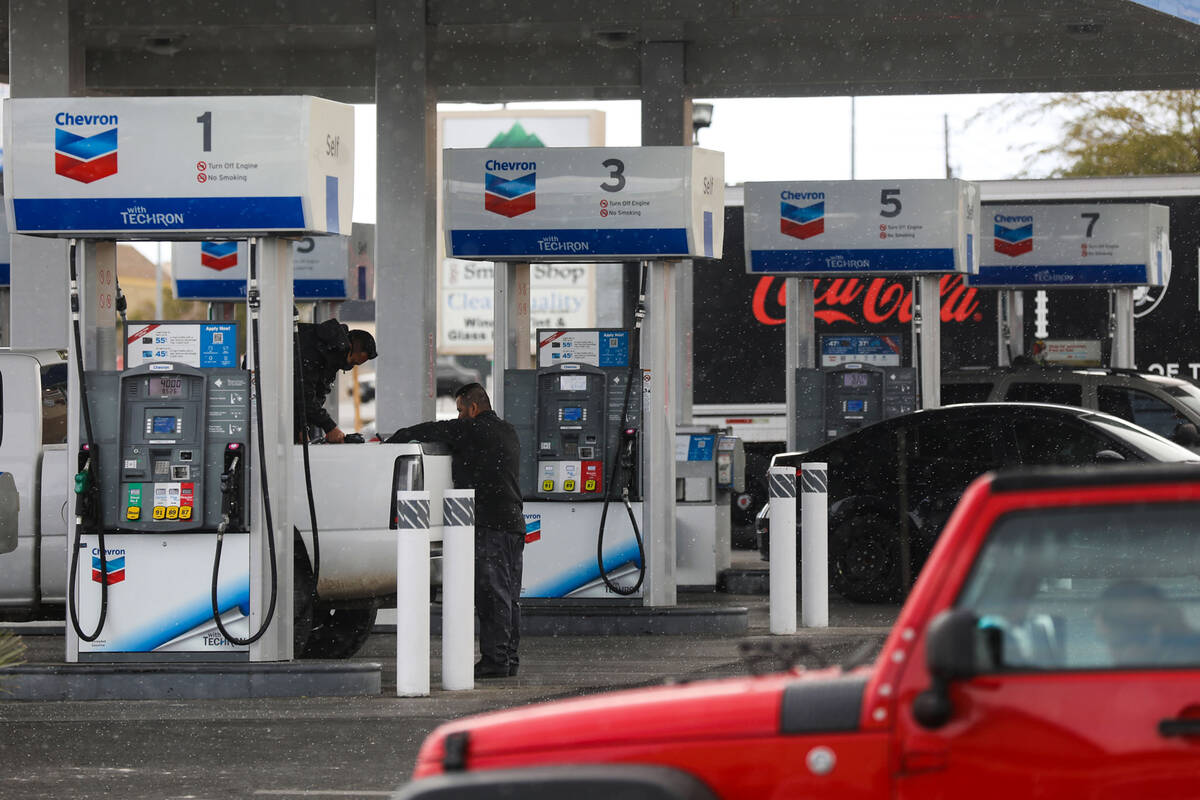Average gas price approaching $4 per gallon in Las Vegas

Prices for gasoline in the Las Vegas Valley have jumped over the past month, pushing the average cost of regular unleaded gasoline to just under $4 a gallon, according to AAA.
Thursday’s price of $3.95 a gallon represents a 5 percent increase over the $3.77 average last month and a 36 percent spike compared with the $2.91 average recorded on the same day last year.
Despite the recent increase in price, the average still sits well below the all-time high of $4.27 a gallon recorded on June 21, 2008.
The Reno area has an even higher average cost of regular unleaded gas at $4.20 per gallon, sitting just seven cents off the all-time high for the area of $4.27 set on Oct. 11, 2012.
The statewide average for gas is 1 cent higher than Las Vegas’ at $3.96, which was $3.80 a week ago. Compared to the same date last year Nevada’s average was up 37 percent from the $2.90 price listed by AAA.
Nationally the average price for regular unleaded gas sat at $3.53 a gallon Wednesday morning, up 6 percent from the $3.32 seen last month. That is the highest average price for gas since July 2014, according to AAA.
Year-over-year, the average national price was up 34 percent from the $2.64 that was recorded on the same date in 2021, according to AAA data.
Increasing costs for crude oil are the main driver to the gas price increase nationwide as crude is nearing $100 per barrel, according to Aldo Vazquez, AAA spokesman. That price is $40 higher than it was in August, Vazquez noted.
With Russia threatening to invade Ukraine, gas prices could be impacted by the unrest overseas with Russia being one of the largest producers of oil, trailing only the United States and Saudi Arabia.
“The oil market is just like any other market and responds to bad news,” Vazquez said. “Any disruptions to the global markets will have a ripple effect on the rest of the world. Should Russia continue its advances on Ukraine, gas prices would likely increase.”
With the U.S. imposing various sanctions on Russia in response to the threat, Russia could retaliate by withholding the oil it produces from the global market. That in turn would put pressure on the already low global supply and hike up prices, Vazquez said.
Additionally, with COVID restrictions gradually being lifted or reduced nationwide as cases tied to the recent omicron surge continue to fall, an increase in travel demand will also drive gas prices up.
“According to the EIA’s (Energy Information Administration) short-term energy outlook, motorists should not anticipate averages in the United States to be below $3/gallon for most of this year,” Vazquez said.
Contact Mick Akers at makers@reviewjournal.com or 702-387-2920. Follow @mickakers on Twitter.